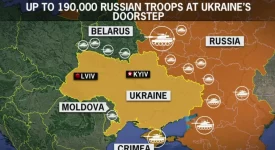Over the past year, the Islamic State has suffered major defeats throughout Iraq and Syria as a result of which the number of foreign fighters joining its ranks started falling. The flow began to reverse especially with the defeat in Mosul and the noose tightening in Raqqa but an estimated number of 15,000 foreign fighters were still on the battlefield at the end of last year. Authorities around Europe have therefore been wary of a potential surge in returnees, which adds on a new dimension to the existing strategy that has so far focused mostly on preventing the travel of potential foreign fighters to Syria.
Returnees pose a threat to security for two reasons: they have an enhanced capability of carrying out attacks resulting from their battlefield experience and network connections and they also have a presumed motivation to do so as many of them are thought to have been brainwashed by their organizations to incite violence. Although some studies have found that most returnees do not present an acute danger, others suggest that a substantial number of returnees become members of extremist organizations at home.
Reflecting public sentiment on the issue, “hard approaches” towards foreign fighters are still popular. These include measures such as revoking citizenship or issuing entry bans to keep foreign fighters from returning home. Within the criminal justice sector, long prison sentences and prosecution are the preferred approaches. However, although the legislation varies from country to country, many EU countries have reported that prosecution of foreign fighters is problematic. Often times, returnees do not meet the required evidentiary threshold or can only be prosecuted for relatively minor offenses, and prison sentences, if imposed at all, are relatively short. The still unclear relationship between imprisonment and radicalization poses another obstacle as well.
Despite these difficulties and a number of gray areas, returnees clearly pose a threat and remain a major policy challenge in tackling the foreign fighter problem and terrorism in broader terms. Even if there is a progress on the “hard approach” of prosecution, this is not going to solve the whole problem. Criminal justice measures need to be augmented by prevention and rehabilitation policies as well, although much needs to be done to evaluate best practices in these programs.
The overview of prevention and rehabilitation in various countries across the EU suggests that programs are most successful when they are adapted to a country’s institutional culture and mostly when that culture is supportive of collaboration between different stakeholders. Similarly, an emphasis on providing radicalized individuals with some sort of pragmatic help in rebuilding their lives is key in countering their return to violent extremism. As many countries are pursuing different approaches, it is crucial to include proper assessments into these programs, whose outcomes should be also broadly discussed so that everyone can learn from the best practices and lessons learned.
‘Tackling the Surge of Returning Foreign Fighters’ – Analysis by Alastair Reed and Johanna Pohl – NATO Review Magazine.







